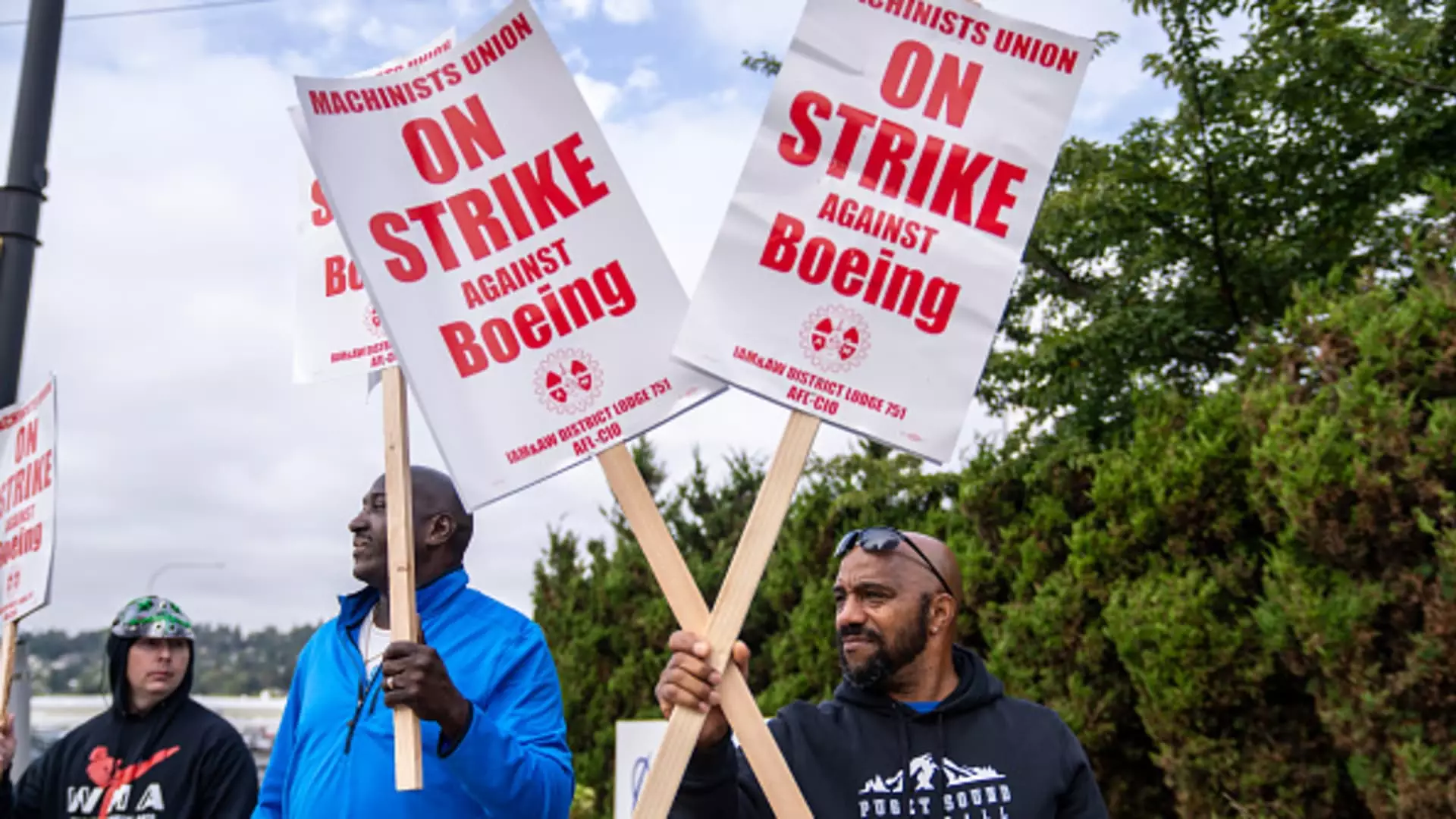Boeing, the aerospace titan synonymous with innovation and industry leadership, faces monumental challenges as it grapples with a strike involving over 30,000 machinists. This industrial action has profound implications not just for the company but also for its workforce and global supply chains. The ongoing strike is not only a sign of deep-seated labor dissatisfaction but also highlights the precarious state of Boeing under its new CEO, Kelly Ortberg.
The genesis of the strike can be traced back to the rejection of a tentative contract, with workers voting overwhelmingly – 95% against it. This strong dissent indicates significant grievances among the employees, beyond mere monetary compensation. With a backdrop of continuous crises, including deadly accidents involving the 737 Max and operational hitches, workers are demanding not only better pay but also safeguards for their job security and benefits. The historical context of the machinists’ ongoing battles for fair labor practices cannot be overlooked, especially in an industry that has seen massive upheaval post-pandemic.
As Ortberg navigates these turbulent waters, he is compelled to not only mend the rift with the machinists but also prioritize the company’s financial recovery. The latest estimates indicate that the strike is costing Boeing upwards of $1 billion monthly, adding extraordinary pressure on a company already confronting significant operational challenges.
The strike’s immediate consequence has been the suspension of production at key Boeing facilities, particularly in the Seattle area. This halt deprives the company of vital revenue and raises concerns about future delivery schedules, particularly for its popular 737 models. Such disruptions not only affect Boeing’s financial health but also hinder its ability to meet commitments to clients and airlines, resulting in a ripple effect across the entire aerospace supply chain.
Boeing attempted to assuage the situation by pulling back a previously sweetened contract proposal after it was rejected. This decision, however, has led to accusations of bad faith negotiation, further complicating relations with the International Association of Machinists and Aerospace Workers (IAMAW). With federally mediated talks having collapsed, both sides find themselves entrenched in their positions, illuminating a standoff with no immediate resolution in sight.
Historically, strikes at Boeing have had a significant impact on labor relations, and this one appears set to be no different. The IAMAW’s leadership has expressed concerns about intimidation tactics utilized by management, calling for a more collaborative approach to negotiations. This perspective speaks volumes about the need for a reevaluation of Boeing’s labor relations strategy under Ortberg’s stewardship.
The company has claimed it will lay off about 10% of its global workforce and has announced plans to cease production of the 767 freighter. This decision, coupled with disappointing financial forecasts, places further strain on the already fragile relationship between Boeing’s management and its employees. Job security is a paramount concern, particularly as employees find themselves losing health benefits during the strike. Unlike previous strikes, however, the current workforce has access to alternative job opportunities in the local area, offering some hope amidst the turmoil.
The financial ramifications of the strike are staggering. Ortberg’s commitment to restoring profitability is currently overshadowed by the specter of multi-billion-dollar losses projected for the third quarter. With reduced aircraft production and delays in the launch of models like the 777X, shareholders are understandably anxious. Boeing’s shares have plummeted, a 42% decline, marking the steepest drop since the turbulence of 2008.
The backdrop of lost profits raises serious questions about Boeing’s operational strategy and its ability to bounce back from this predicament. Analysts predict a potential equity raise of up to $15 billion as a means to stabilize finances, yet the company’s aggressive cost-cutting measures may backfire. The attempts to trim the workforce could impair the skills necessary for recovery once production resumes, creating a self-sabotaging cycle.
As Boeing grapples with labor strife and financial instability, Ortberg faces the daunting task of steering the company back to a path of growth. The solution lies in fostering a collaborative environment with the union and effectively addressing the root causes of discontent. Workers want assurance that their contributions are valued, and their well-being is prioritized.
Ultimately, Boeing’s ability to negotiate a favorable resolution to the strike could signal a turning point in its recovery. However, it must be done with care, ensuring that both workforce and management can coexist with mutual respect and understanding. If Ortberg can successfully navigate this crisis, it could set a robust precedent for Boeing’s recovery and future resilience in an ever-evolving aerospace landscape.

